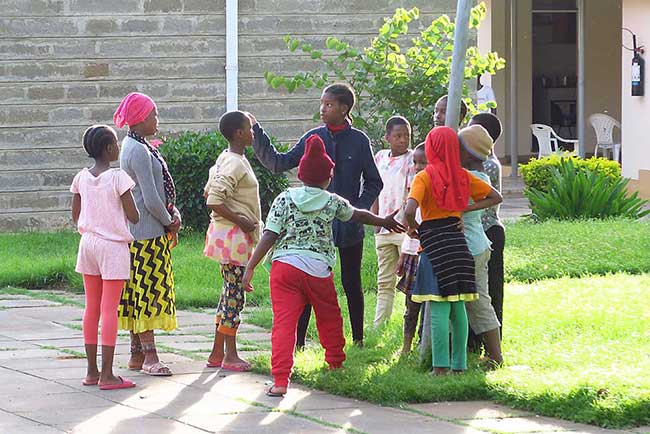Session 21/21
Page 4/6: Topic C: Mapping the child or youth’s relations and attachmentsTopic C: Mapping the child’s relations and attachments
What must be discussed and planned when selecting a child or youth for family reunion?
And how can we make a precise assessment of all the person’s social relations?

When is a child or young person ready for family reunion?
The task of selecting a child or youth for reunion is an individual process. Each case is unique. For all practical and material purposes, please refer to this manual.
Research shows that the most important success factor in reunion is having a secure relational network.
Making the right choice of a child or youth depends much on the judgment of managers and SOS Parents, their intimate knowledge of the child, and the close teamwork among staff. To help you make informed decisions, here are some experiences from re-integration projects and research in caregiver shifts. They are general and may not necessarily apply to the individual child – please include your professional judgement in the specific case.
When is a child or youth ready for a shift in caregivers?
In general, children of any age can be eligible for family reunion. In practice, teenagers and young people are most frequently reunited.
The younger a child is, the more flexible it will be in its ability to shift from one caregiver to another. Research shows that children younger than three are very often able to form a secure attachment to a new caregiver. After a year or so of accommodation, the infant or toddler will perceive the new caregiver as its emotional parent, and the shift will be successful.
For children age three to around eleven years the shift can be a challenge, especially if it only had little time to attach securely to its SOS Parent. At this age, emotional and physical stability are required for important skills, play, and learning development. A shift may disturb the child’s ability to perform in school, and sever the social bonds with its peer group. An eventual reunion will require a very high degree of motivation from the child, and secure parenting skills in the family.
Teenagers and youth are often able to understand and express their needs and desires, and make informed choices about family reunion. At this age it is also natural to separate from parental caregivers and start independent living. Young people have experiences from life outside the Village, and often have a desire to become part of the community. The onset of puberty can cause emotional and physical instability, and waiting for maturation should be taken into consideration.
Children with special needs or other disabilities
Re-integration of children with physical or intellectual disabilities is a major challenge in many communities. It is recommended that the first family reunions should be with children or youth who are thriving and expected to be able to adapt to change. Staff will build the experience to the more difficult re-integration of the disabled. These guidelines with experiences in East and South Africa can help you plan the process.
Group discussion 30 minutes
Please discuss and make a work plan according to your considerations:
- What are our thoughts about the age of a child or youth in question?
- What advantages and risks in age must we consider?
- A child’s readiness for reunion: how can we apply this knowledge?
Next, you can use a tool for a precise assessment of a child’s many bonds and attachments.
How to use the Child and Youth Attachment Relations Map
How can we get an overview of a child’s most important bonds and relations, and understand the child’s own view of who it is attached to – before, during, and after family reunion?
It is important for managers and caregivers to make their own assessment of whom the child is positively attached to. Also, to know the child’s own view: Who does it feel secure and bonded with, and whom does it feel insecure about? Also, how do relatives describe their relations with the child? Using this Map will help you find answers through dialogues.
The Attachment Relations Map is easy to use. The purpose is to give all those involved a clear overview: Who is a child or young person attached to? Who makes it feel secure or insecure?
The map gives you three angles to evaluate the quality of a child or young person’s social network:
The professional view, the child’s view, and the view of the relatives.
Please open and print The Child and Youth Attachment Relations Map. Print as many as needed, and read the manual before using it.
We recommend using the map in the following steps:
- SOS Mothers and program managers fill out the Map: What is our professional view of the important attachments of this child or teen?
- From the child’s view: A person who knows the child or youth interviews and gives help to fill out the Map. How does he or she describe its important secure or insecure relations?
- At a home visit with relatives: Present and help them fill out a Map. How do they see their own attachments to the child. How do they think the child sees them?
Perspectives will change during re-integration, so please apply the map before, during and after family reunion. After using the map in any of the three steps, please discuss and plan:

Group discussion and work plan 45 minutes
- Are the three views (professionals, child, family) in agreement or are they very different?
- How will we work to create agreement between all parties involved?
- How can we reinforce the secure attachments, and resolve the insecure relations?
If your assessments made you decide to continue, it is time to plan for the next step:
Working with government staff, and preparing the community and family for receiving the child in a secure environment.
